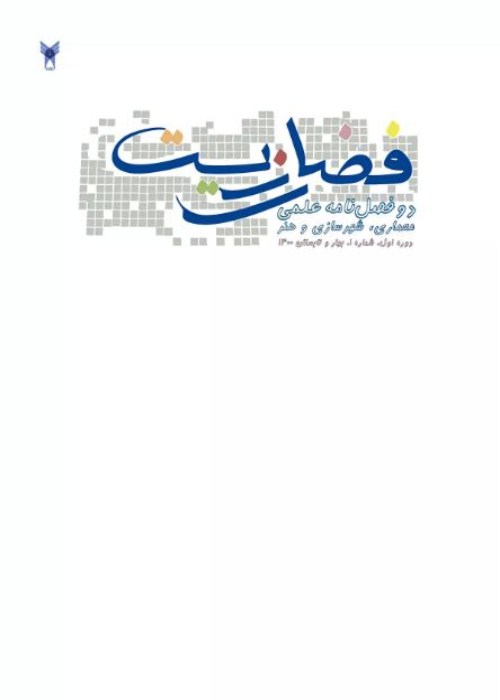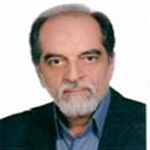A Search for Aspects of Concept of Rhythm and Their Manifestation in Architecture(Case study: Tazkieh (2) Girls' Educational Complex)
Rhythm generally is the repetition of patterns regularly occurring in the phenomena and processes. This concept is understood well in music. The regular succession, tempo, repetition, and harmony are the familiar words that have always been heard. However, rhythm is beyond its audio or visual representations, and it has been studied in philosophy, art, sociology, psychology, human and urban geography, urban design, and architecture, showing its polymorphic nature. Explaining a cohesive framework of the aspects that implies the rhythm and provides new interpretations of rhythm are the focus of the current study. Therefore, the present research aims to answer the following questions: A) What are the aspects of rhythm? and B) How are they manifested in the architecture?In reviewing the literature, a chronological view has been adopted to determine the change in the concept of rhythm by experts in various scientific fields until the beginning of a new era of scientific research by Henry Lefebvre. Among the many experts who have conducted researched on the concept of rhythm and its characteristics, the views of four scholars were selected for formulating the theoretical framework. Those experts include Henry Lefebvre, Irwin Altman, Carol M.Werner, and Mattias Kärrholm. The reason for selecting these experts was that they had an interdisciplinary view in studying rhythm and also their fields of studies are related to architecture, culture and build environment. The aspects of rhythm were extracted and classified from these experts’ opinions.The research method was qualitative based on the logical reasoning approach. Data were collected through participant observation and semi-structured interviews with various school users. The research participants were ten permanent staff of the school (as the representative of the different groups of the school users) selected using the purposive sampling method and theoretical saturation criteria. These participants were: manager, human resource manager, staff of the human resource, manager of the cultural affairs, the executive deputy and support, library manager, the authority of the twelfth grade, photography teacher, service sector staff, eleventh-grade student. Analyzing the text of the interviews was done in three steps of Strauss and Corbin’s systematic coding process (open coding, axial coding, and selective coding) using Maxquda 2020, a qualitative statistical analysis software, to extract the activities and repetitive events of the users in the school.Results showed that intrinsic feature of rhythm is spiraling movement, manifested in the form of aspects of succession (accepting change over time), duration (continuation in time), speed (slow and fast), temporal salience (existing of qualitative and distinct moments), synchronization (Simulating the behaviors and movements of the people in social links). The movement concept can be seen in all aspects of rhythm. In Tazkieh school (Tehran City, Iran), Succession is understood by moving through stairs and different spaces in each floor, and also objective of sun movement during the day. However, daylight in school interiors does not have much effect due to the use of thick curtains to solve the problem of hijab. Succession in relation to erosion of surfaces in any building is a gradual change, indicating movement. This succession occurs in all buildings and its speed is inversely related to the quality of materials and their durability. Users' spatial experiences of daily activities and events in the school, religious, and national annual calendar indicate socio-cultural dimension of duration. Physical manifestation of this aspect of duration is in architectural elements, such as decorations, symbols, and architectural style. The instance of speed is defined by activity types occurring in a place and varies time to time. Mental perception of time is related to the rapid or slow occurrence of activities and experiences in a place that are changing over time. Each place, depending on its function, is host to certain activities that are regularly repeated. The example of a place with different speeds is obvious in the School. For example, the speed of classrooms is adjusted and changed by a mechanical clock between a quiet place during teaching and a fast place during break time and art workshops. The lived experiences and memories of school users of activities, events, and their locations in the school emphasize the temporal salience. Teaching behaviors and their repetition by students in social connections, such as events and ceremonies, is a clear example of synchronization.
rhythm , Time , movement , architecture
- حق عضویت دریافتی صرف حمایت از نشریات عضو و نگهداری، تکمیل و توسعه مگیران میشود.
- پرداخت حق اشتراک و دانلود مقالات اجازه بازنشر آن در سایر رسانههای چاپی و دیجیتال را به کاربر نمیدهد.



